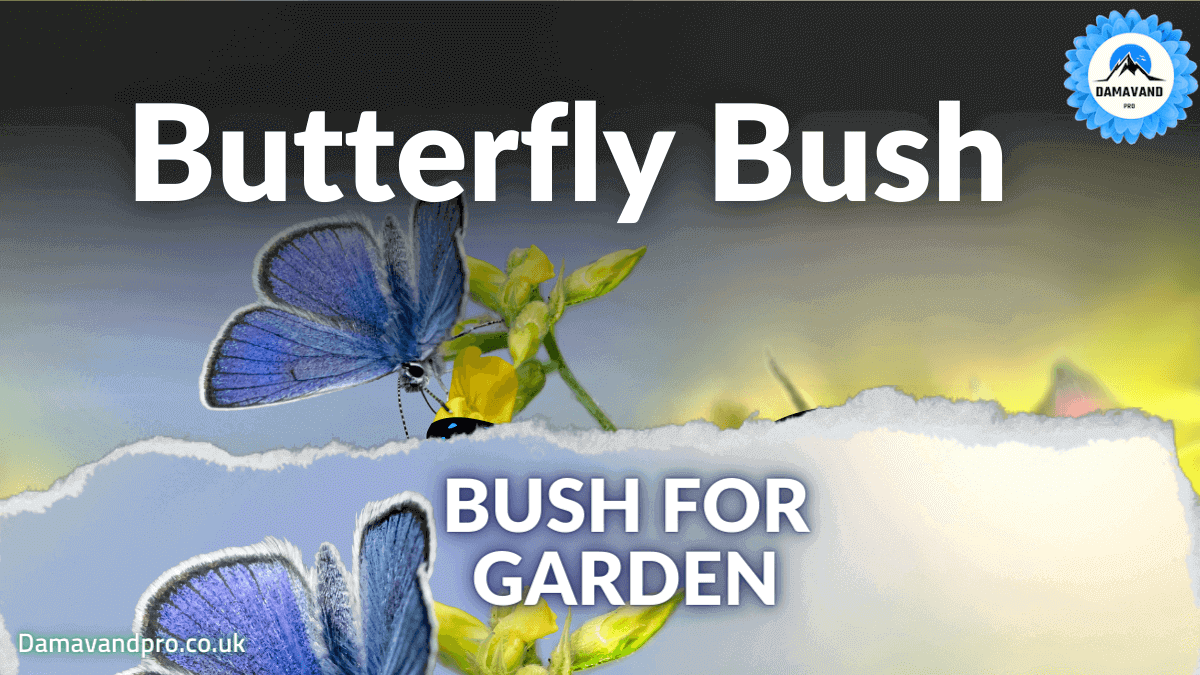+447709283333 | info@damavandpro.com

All About Butterfly Bush
Because of the growing interest in butterfly gardens, butterfly bushes have become extremely popular. Even when not attracting butterflies, bees, hummingbirds, and beneficial insects, these lovely shrubs make lovely landscape plants.
Tall species can reach 10 to 12 feet in height and make an excellent backdrop plant in a flower border. Smaller varieties that grow 2 to 4 feet tall and fit more easily into most modern landscapes have been developed.
Butterfly Bush Varieties and Applications
Butterfly bushes are a common type of flowering shrub. They flower from midsummer until frost on new wood that grew in spring, producing blooms in a variety of colors. The flowers also have a honey-like scent, which is strongest around midday. There are numerous butterfly bush varieties to choose from.
The Butterfly Bush Davidii cluster contains the most common varieties. These squares are the hardest, hailing from Asian nations and China. These hybrids will reach heights of six to ten feet and are hardy in Department of Agriculture zones five to ten.
Among the varieties are “Black Knight,” which has sleek branches and deep-purple colored flowers; “Harlequin,” which has rose-purple colored flowers and cream-colored leaf margins; and “White Bouquet,” which has terribly odorous white blooms. Some dwarf versions of this cluster embrace “Sky Blue” with blue-black colored flowers and “Hot Raspberry” with raspberry-pink colored flowers. Each variety grows on plants that measure three to four feet tall.
Other butterfly bushes from around the world are also worth a try. Lindley’s butterfly bush is a Chinese native with green leaves, cinnamon-colored bark, and 2-foot-long lavender flowers. It has the ability to be limbed into a small tree. Loricata butterfly bush, with white or pale-yellow flowers, comes from South Africa.
Because it blooms on old wood, it should be pruned after the first flush of blooms in the summer. The Snow White butterfly bush, which can grow up to 15 feet tall and has pale lavender-colored blooms, is also from China.
The butterfly bush in the garden

In the back of your flowering border, plant tall butterfly bush varieties. They’ll look great next to other butterfly favorites like butterfly weed and echinacea. In addition, when you prune the shrubs in the spring, other early-growing perennial flowers will hide them from view.
Plant butterfly bushes near windows or doors so you can enjoy the scent and sight of the butterflies all summer.
Butterfly bushes can also be planted in a mixed-shrub border with shrubs like elderberry, smokebush spirea, and weigela to add color and interest in the summer and fall.
Use dwarf varieties in the center or front of your garden, as well as in rock gardens. These won’t need as much pruning to flower well and will stay a more manageable size. Butterfly bushes can be combined with Verbena bonariensis, pineapple sage, purple salvia, lantana, swamp milkweed, and asters.
Some dwarf butterfly bush varieties thrive in containers. In cold climates, these containers must be protected during the winter or moved to a warmer garage or shed.
Planting Tips for the Butterfly Bush
Keeping up with deadheading on these larger shrubs can be difficult because they flower so profusely and the dead flowers are unsightly. To avoid the problem of self-sowing, try to deadhead regularly throughout the summer, not allowing the seed to set.
Butterfly bushes are considered invasive in some states (Oregon, Washington, and Hawaii), so caution should be exercised to prevent their spread. They are a pioneer species that moves into open, sunny, disturbed lands where they are native. They can produce millions of seeds in a single season. In the wild, the plants are eventually pushed out by taller shrubs and trees.
Without these natural controls, these seeds can be a nuisance in the garden. While deadheading will help, growing varieties like “Blue Chip” and species like Buddleia fallowiana with sterile or low-viability seed will help reduce the threat. In colder climates, butterfly bushes are less invasive.
